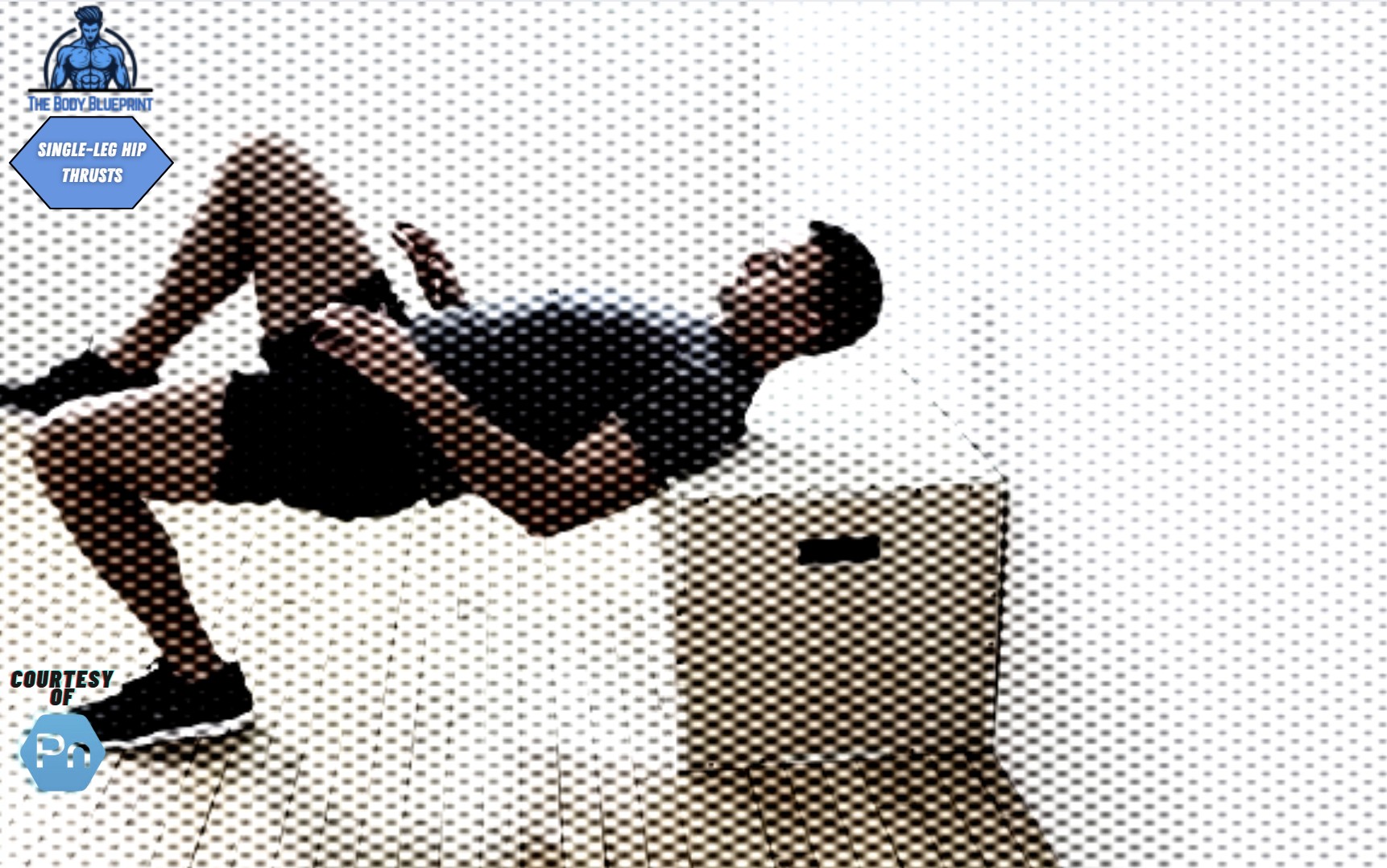Let’s talk about the single-leg hip thrust: the power move that’ll unlock some serious glute strength, stability, and size. When you’re aiming for total lower-body dominance, this one’s essential. It’s a high-impact exercise that’ll level up your posterior chain like nothing else. Ready to crush it? Let’s dive in.
Why Single-Leg Hip Thrusts? The Benefits You Can’t Ignore
Before we get to the how-to, let’s break down why you need this in your routine. When you move your body unilaterally, you’re engaging each side separately, correcting imbalances, and boosting coordination. Here’s the deal:
- Increased Glute Activation: You’re isolating the glutes, which means more growth.
- Better Hip Stability: Engages stabilizer muscles, ensuring control and reducing injury risk.
- Improved Performance: Whether you’re squatting, deadlifting, or running, stronger glutes give you an edge.
- Unmatched Focus on One Side: Correct imbalances by ensuring both legs are pulling their weight.
How to Set Up for Single-Leg Hip Thrusts
This isn’t your average workout. Here’s how to properly set it up so you can feel each rep, and maximize your results.
- Find Your Bench or Elevated Surface
- Height: Look for a bench or surface that keeps your upper back supported, but allows your hips to fully drive upward.
- Placement: Your shoulders should rest comfortably against the edge of the bench.
- Foot Placement
- Place one foot flat on the ground. Your knee should form a 90-degree angle.
- Keep the other leg extended, parallel to the floor, or tucked in for stability.
- Barbell or Weight Setup
- Add a barbell (or weight) across your hips if you’re going heavy. Use a pad for comfort on the barbell.
Performing the Movement: Single-Leg Hip Thrusts Step-by-Step
Now let’s get into the meat and potatoes of it. Follow these steps and feel that glute pump.
- Position
- Rest your upper back on the bench with one foot flat on the ground.
- Place your other foot off the ground, leg extended.
- Engage Your Core
- Brace your abs, squeezing your glutes as you prepare to thrust upward.
- Thrust Up
- Drive through your planted heel, pushing your hips straight up, bringing your extended leg parallel to the floor or higher.
- Squeeze the glutes hard at the top—don’t rush this part.
- Lower Slowly
- Slowly descend, keeping the tension on the glutes throughout the motion.
- Repeat
- Perform reps with controlled tempo, focusing on quality over quantity.
Common Mistakes to Avoid
Every movement has its missteps. Here’s where you can avoid sabotaging your gains:
- Hyperextending the Back: Don’t arch your lower back. Your hips should be the driving force, not your spine.
- Foot Too Far Away: If your foot’s too far from your body, it won’t activate the glutes properly. Get the right angle.
- Dropping the Hips Too Fast: Control the descent. Quick drops won’t build tension, which is where the magic happens.
Progression Tips for Maximum Results
Want to make the most out of single-leg hip thrusts? Here’s how to level up your game over time:
| Progression Level | What to Focus On |
|---|---|
| Bodyweight | Master the movement and feel each rep. |
| Weighted Thrusts | Add resistance with a barbell or dumbbell. |
| Tempo Control | Slow down the lowering phase to increase time under tension. |
| Band Resistance | Add a resistance band for extra glute engagement. |
Single-Leg Hip Thrust Variations: Keep Things Fresh
To keep your glutes guessing, try these variations:
- Pause at the Top: Hold at the top of the thrust for 2-3 seconds, really focusing on glute activation.
- Tempo Thrusts: Slow the lowering phase down to 3-4 seconds to build maximum tension.
- Add Weight: Use a dumbbell or kettlebell on the extended leg for added resistance.
Q&A: Uncommon Insights on Single-Leg Hip Thrusts
Q: Can single-leg hip thrusts replace squats for glute growth?
A: Not entirely, but they’re a killer complementary movement. Squats target the quads more, while single-leg hip thrusts isolate and blast the glutes. Best to pair them.
Q: Should I do single-leg thrusts every leg day?
A: If you’re aiming for strength and size, yes. But give your muscles recovery time between sessions—three times a week is perfect.
Q: What’s the difference between single-leg and double-leg thrusts?
A: Single-leg thrusts isolate each side, which helps with muscle imbalances. Double-leg thrusts are better for overall glute strength.
Quick Recap: Single-Leg Hip Thrusts in Action
- Setup: Find your bench, position your foot, and load the barbell.
- Execution: Drive through the heel, thrust the hips upward, and lower slowly.
- Avoid: Hyperextending your back and rushing reps.
- Progress: Increase weight, control tempo, or add bands for more intensity.
So, next time you’re in the gym, try out these single-leg hip thrusts. Get in there, move with purpose, and feel the strength. This is how you build more than just a strong lower body—you’re forging power, stability, and athleticism. Ready to get started? Your glutes are waiting.

